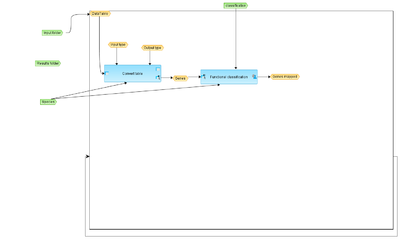Mapping to ontology - select a classification (Multiple Gene tables) (workflow)
- Workflow title
- Mapping to ontology - select a classification (Multiple Gene tables)
- Provider
- geneXplain GmbH
Workflow overview
Description
This workflow is designed to classify a multiple set of genes by enrichment analysis using GO, Reactome, HumanCyc and TF classification databases. Gene sets should be located in one folder.
The input table is converted into one table with Ensembl Gene IDs.
The table with Ensembl Gene ID is subjected to functional classification based on the classification option selected in the input field.
The output consists of a folder which stores the mapped classification table. Each output table consists of many columns. The column ID comprises the identifiers of the ontological categories, here identifiers of Gene Ontology biological process terms. These identifiers are hyperlinked to the page http://www.ebi.ac.uk/QuickGO/ where you can get further information about this ontological term.
The columns Title and Group size contain further details about the ontological terms, its title and the number of genes linked to this term in the corresponding database, here in GO. The column Expected hits shows the number of genes expected to fall into this category by random chance, based on the size of the input set and the size of the category. The column Number of hits shows how many genes from the input table fall into this category. P-value and Adjusted P-value are calculated for the difference between expected and real numbers of hits. The genes mapped to each category are explicitly listed in the column Hit names.
The same steps are repeated for the next input table, and several cycles are performed automatically corresponding to the number of tables in the input folder.
Parameters
- Input folder
- Folder to get input tables from
- Species
- classification
- Results folder
- Folder to store results (will be created if not exists yet)
